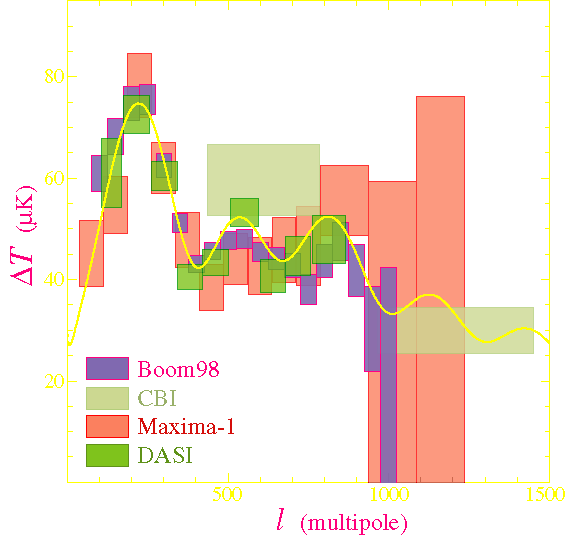
The predication of a second peak, at a position that is a harmonic of the first peak, is an immediate and unavoidable consequence of the interpretation of the first peak as being due to sound waves from gravitational potential perturbations layed down in the early universe. As of May 2001, the first detections of a second peak have been reported by the DASI, Boomerang and Maxima experiments:

We expect this situation to change rapidly and this web page to go out of date quickly!
Nevertheless, the basic cosmological inferences from these measurements will remain unchanged. We will see that the main inference is on the amount of baryons (or ordinary matter) in the universe.